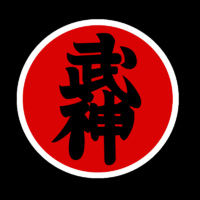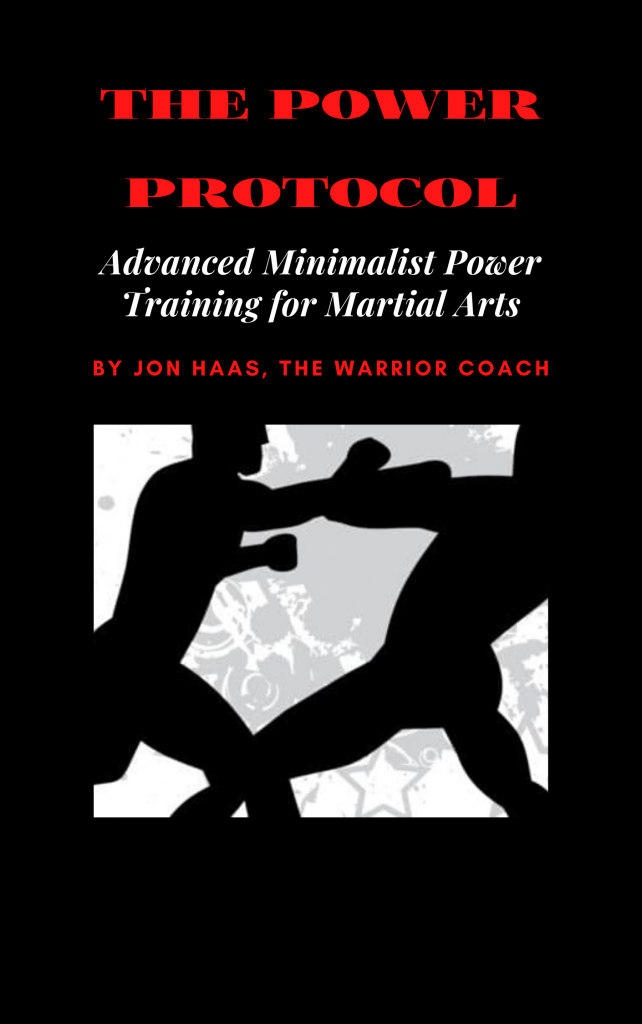 As a 25 year veteran of Bujinkan martial arts training, as well as being the creator of Warrior Fitness Training Systems, one of the things I pride myself on is my ability to access the fitness needs of my fellow martial artists, particularly those who train in the Bujinkan.
As a 25 year veteran of Bujinkan martial arts training, as well as being the creator of Warrior Fitness Training Systems, one of the things I pride myself on is my ability to access the fitness needs of my fellow martial artists, particularly those who train in the Bujinkan.
A common misconception that you’ll hear bandied about from dojo to dojo all across the world is that strength, and by association overall, general fitness, is not required.
I think this has to do with a fundamental misunderstanding of how we train. In class, when practicing techniques, it is imperative to be as efficient in one’s movement as possible, and thus avoid using excess, unnecessary power (read – strength).
In order to isolate the study of distance, timing, angling, and space management, one must put strength on the back burner in the dojo to avoid powering through the movements and missing all the wonderful subtleties that taijutsu has to offer.
However, in an actual conflict, you can and in fact, you must, use all your power, including strength, to survive. As Jack Hoban said in his interview here, “real fights are very physical – tiring and punishing”. Anyone who thinks physical fitness isn’t required in the traditional martial arts is really just kidding themselves.
Bujinkan Practitioners and Fitness
Why do Bujinkan practitioners need fitness training?
“Optimal physical conditioning provides the platform from which the skills can be used.”
– Fred Hatfield, aka Dr. Squat
Meaning that the specific physical skills of taijutsu MUST be built upon a solid foundation of basics, like sanshin no kata and kihon happo, and even more fundamental, a strong budo-body. Without this platform in place your martial art skills are like a house built on sand.
From my book, Warrior Fitness: Conditioning for Martial Arts:
“Since combat occurs in a volatile and unpredictable atmosphere, training must prepare the warrior to adapt. Remember that the goal of all the exercises in this manual is to develop the ability to control the degree of tension in our body and be able to utilize just the right amount of force at the appropriate moment. This way we may be able to sustain activity for longer and longer periods of time without exhausting ourselves.”
The first step in ensuring you are building skill on top of a solid foundation is General Physical Preparedness (GPP). The goal of GPP is enhanced work capacity. This is the ability to run faster, jump higher, and hit harder.
When work capacity increases, it allows the budding warrior to adapt more easily to increases in both mental and physical demands. In other words, it increases your capacity and level of readiness to absorb higher levels of specificity. In a martial art as seemingly limitless as Budo Taijutsu, one must possess the endurance to “keep going!”
In Part 2 of this series on fitness for Bujinkan practioners, we’ll look at some examples of GPP type exercises and how to incorporate them into an overall training program.
-
Looking to increase your level of readiness for martial arts training and fitness?
Want to train more, at a higher level, for a longer period of time?
Want to get more out of your training time both at home and in the dojo?







4 Comments
Maxim
March 16, 2010When I move to USA I was really surprised to see pure technical Martial Art classes. In Belarus typical class was 1:30 h and at least half of this time for for fitness…..
I think one of the reason can be in commercialization of Martial Arts. When people come to MA class they paying for technic, and then they come to GYM they pay for fitness….
Jon
March 17, 2010Nice to see you here, Max! I think one of the main reasons behind many traditional martial arts classes not spending class time on fitness is that they expect the students will be doing it on their own outside of class. Unfortunately, this expectation seldom gets communicated, or if it does, the students are not acting on it.
Tony N
March 19, 2010I remember when I did Karate we used to do techniques up and down the hall. In Thai Boxing there was a lot of punishing pad work. In Kung Fu there was hard to maintain stances. Even fencing was fast and furious. I guess there was more acceptance of a harsh training environment, besides most students were 18-35 years old. Even my early Bujinkan training had grappling and sparring sessions, it was very tiring and got the adrenalin pumping. Looking at it now though I realize that I was young, eager and for the most part healthy. Several people turned up to observe and must have just given up at seeing the pace of training. Sometimes however the classes were much less demanding and for several good reasons. Should a martial art exclude someone who is unable to keep the pace due to age? What level should the pace be if the class has a range of abilities? Do the students really need to do in class what they could do in their own time? What if there is so much more to the art to teach? Doesn’t something have to be cut from class if time is limited? It’s very positive that martial art classes can focus on learning new things to take away and have participation and interest from a diverse range of people. So maybe aside from the commercial aspect there is also a highly practical one too. However, just like Jon said above, fitness is easily neglected. Maybe that makes training even harder, because you have to be reliant on yourself to work on that aspect. Luckily Jon is here to help!
hazchem
July 15, 2010only just found this site after seeing a post about the book on Kutaki No Mura. I’m only very new to the Bujinkan and haven’t practised any other martial art. Having a good fitness base due to daily gym attendance and regular yoga practice I have to admit to being a little surprised at the condition of a few people who train at the dojo. Anyway, that said, I had begun a search for strength and conditioning program to support my Bujinkan training, seems I’ve found what I’m looking for!
Leave A Response